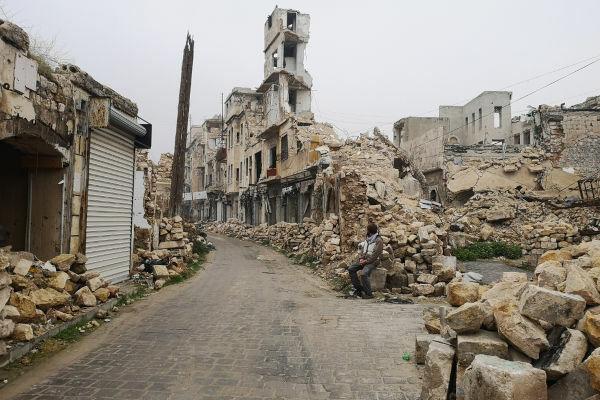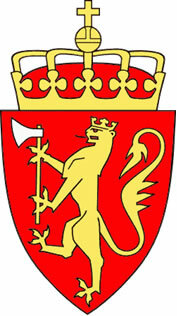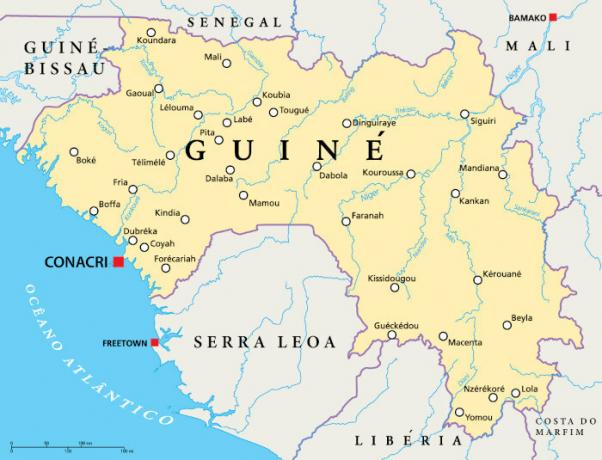THE WarCivilSyria extends since 2011, involving various armed groups. It started as a consequence of the Arab Spring — the protests that spread across Arab countries with calls for more democratic opening. The government's violent response caused opposition groups to arm themselves, and 10 years of conflict resulted in the deaths of 600,000 people.
readmore: On November 13, 2015, Paris was the target of Islamic State attacks
Causes of conflict
Syria has been ruled by the Al-Assad family since the 1970s in a dictatorial way. Bashar al-Assad he only took over the country in 2000, after the death of his father, Hafez al-Assad. Bashar's government has suffered numerous criticisms for the corruption and lack of political freedom. These criticisms took on new proportions with the Arab Spring.
![In early 2011, the Syrian population expressed their dissatisfaction with the government of President Bashar al-Assad.[1]](/f/bee0cb722f8dcdc5c0660fa28c16ec9b.jpg)
THE Arab Spring happened when the population of countless Arab countries demonstrated
demanding democracy and better living conditions in their countries. The protests started in late 2010 in Tunisia and spread to other countries such as Libya and Egypt. In Syria, protests began in March 2011 in the southern city of Deraa. The Syrian government's response was violent, which prompted new rebellions in different parts of the country, such as in the capital, Damascus, and in Aleppo, its largest city.At first manifestations against the government of Bashar al-Assad happened in a school in Deraa, when students under 15s began graffiti against the president. The Syrian secret police were mobilized to arrest them. These arrested students were later brutally tortured in the interrogation conducted against them.
The arrest of students and public dissatisfaction prompted new protests, and as government repression against popular protests increased, more protests were organised. soon if formed resistance groups that turned into armed militias, whose objective was, first, to guarantee its defense against government repression and, second, to guarantee the overthrow of Bashar al-Assad.
These rebel armies were initially formed by civilian and military deserters who did not agree with the violent treatment that the population of the country was receiving.
Civil war growth
![Free Syrian Army soldiers in preparation for a battle against the Islamic State.[2]](/f/ffd30c4fc1153119f210a089b0897928.jpg)
THE UN and the Arab League moved to seek diplomatic solutions to the conflict, however, the negotiated ceasefires were never respected. Thus, the escalation of violence in Syria took on civil war proportions. The civil war in Syria is considered to have started in March 2011.
At that time, the main rebel force was the Free Syrian Army (ELS), which emerged in July 2011, and consisted mainly of deserting soldiers. This group had secular characteristics (it was not subject to any religious order) and, therefore, was considered a grouprebelmoderate, but, over time, the ELS underwent an ideological change, adhering to fundamentalist ideas.
Starting in 2012, the Free Syrian Army lost strength, and since 2016, this group has been openly dependent on the support offered by Turkey. The rebel opposition in Syria also included extremist groups with a jihadist bent, such as the Hayat Tahrir al-Sham, formerly known as Jabhat Fateh al-Sham, and Al-Nusra Front. Many international analysts point out that Tahrir al-Sham has links with the al-Qaeda, but members of this group deny it.
Do not stop now... There's more after the advertising ;)
From 2013, O Islamic state, former Iraqi armed wing of al-Qaeda, took advantage of Syria's instability and joined rebel groups of Sunni jihadists. However, as the Islamic State grew rapidly, it self-proclaimed a caliphate in territories in Syria and Iraq. The caliphate is a kind of kingdom based on Islamic law, the Sharia. The war, which had started with political reasons, took on religious proportions.
Other fronts of war emerged with small rebel groups, mainly of fundamentalist tendencies. However, the performance of the Islamic State and Hayat Tahrir al-Sham has diminished considerably in the latter due to the weakening of both. Today, Tharir al-Sham has a strong presence in northern Syria, and ISIS, although greatly weakened, is still a threat to the country. International observers fear a return of this terrorist organization.
Another group that stood out in the civil war waged in Syria were the Kurds, who mobilized for the conflict starting in 2014, when the Islamic State began to persecute Syria's Kurdish minority. Kurdish troops currently maintain control of northern Syria, in the region called rojava or Northern Syria Democratic Federation.
As the war was being fought between different groups, the conflict spread across several fronts. Thus, troop shifts and movements have taken place (and still do) with great frequency in Syria. Finally, it is important to remember that the war in Syria has lasted for over 10 years and is far from over.
read more: September 11, 2001 was marked by attacks carried out by al-Qaeda
foreign mobilization
The civil war in Syria has become a conflict of great proportions, mainly due to the interferenceforeign in the country. Several countries were directly or indirectly involved in the conflict, financing certain groups. Thus, the world watched Syria become a stage for disputed interests between nations.
The Syrian government owns the support from Russia and theWill, which send, in addition to weapons and money, troops. The Free Syrian Army and the Kurdish Army receive support from the United States, which opposes Bashar al-Assad, but mainly to the advance of the Islamic State, which, as we have seen, was a protagonist of the conflict for some years back.
In addition, Turkey also funds the Free Syrian Army, but it fights openly against the Kurdish army (the Kurds are a persecuted minority in Turkey). International observers believe Turkey's involvement in the war is due to its interest in weakening the Kurds, in becoming a leading power in the war. Middle East and in, perhaps, expanding its territory, taking advantage of Syria's instability.
Other countries that acted directly or indirectly in the conflict were Saudi Arabia, United Kingdom, France and Israel. Recently, as a result of the American attack on the Syrian government air base in the city of Homs, relations between Russia and the United States have been shaken. Russia and Iran have expressed their dissatisfaction with the US attack on the Syrian government (Russian ally).
You U.S they intervened because they attribute the chemical attack that took place in April 2017 against the town of Khan Sheikhoun to Bashar al-Assad. O chemical weapons attack used in Khan Sheikhoun resulted in 86 deaths from the highly toxic sarin gas. In all, we know of three occasions (in 2013, 2017 and 2018) in which the Syrian government used chemical weapons against its own population.
Until the year 2015, the situation of the government of Bashar al-Assad was extremely delicate in the country and suffered heavy attacks from moderate rebel groups and the Islamic State. The Iranian and Russian intervention in favor of Al-Assad was essential to sustain him in power. Today, their situation is comfortable, and many opponents have lost steam in recent years.
Accessalso: Gulf War, one of the great conflicts that happened in the Middle East
Consequences
Over 10 years, the Syrian Civil War had serious consequences for this Middle Eastern country. The war was responsible for destroy the country's infrastructure, put a large part of the local population in poverty. and was responsible for the deaths of thousands of people.
Currently, it is said that the civil war in Syria was responsible for the death of 600 thousand people. This statistic was made available by the Syrian Observatory for Human Rights and includes people who are officially dead and missing (which, given the scenario of the country, are probably people who died and had not had their bodies found or identified).

There is also talk of about two million people who were injured throughout the conflict. Among these people, thousands were left with some form of permanent physical disability. Another consequence was the large number of people who were forced to flee their homes.
It is estimated that approximately 13 million Syrians abandoned their homes, of which seven million migrated within Syrian territory, while others six million chose to flee the country. Of this total, more than half took refuge in the interior of Turkey, the country in the world that received the most Syrian refugees. The migration of millions of Syrians to Europe resulted in what became known as refugee crisis.
The war has placed thousands of people in a difficult situation, and many find it difficult to obtain food. Thousands of children had their chances of building a better future destroyed by being left without education, and millions of Syrians suffer from the destruction of the country's health system over these 10 years of war.
The bombings that the country suffered during this conflict caused cities like Aleppo to be completely destroyed, and the image of this destruction spread around the world. Finally, Syria also witnessed the destruction of its historical cultural heritage, with emphasis on Palmira, which had very important sites being destroyed by the Islamic State.
After 10 years of conflict, international observers still do not see the possibility of an end. Many believe that Syria will become another country withchronic instability, as is the case of Iraq and Afghanistan, for example.
Image credits:
[1] Harold Echelon and Shutterstock
[2] Elm Couto and Shutterstock
By Daniel Neves
History teacher



